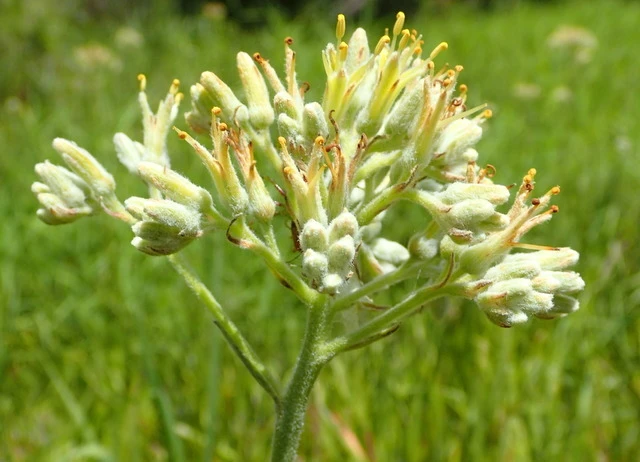Carolina Redroot
(Lachnanthes caroliana)
Carolina Redroot (Lachnanthes caroliana)
/
/

mfeaver
CC BY 4.0
Image By:
mfeaver
Recorded By:
Copyright:
CC BY 4.0
Copyright Notice:
Photo by: mfeaver | License Type: CC BY 4.0 | License URL: http://creativecommons.org/licenses/by/4.0/ | Rights Holder: mfeaver | Publisher: iNaturalist | Date Created: 2021-08-14T11:44:23-07:00 |

























Estimated Native Range
Climate Requirements for El Paso De Robles, California
| This Plant | Your Site | Plant Suitability for Your Location | ||
|---|---|---|---|---|
| • Precipitation | 41" - 67" | 15" | Your precipitation may be insufficient for this plant. Irrigate N" / year. | Irrigate N" / year |
| • High Temp. | 75°F - 94°F | 92°F | Your summer temperatures are normal for this plant. | Excellent |
| • Low Temp. | 14°F - 59°F | 33°F | Your winter temperatures are normal for this plant | Excellent |
This plant should grow well at your location with about N inches per year (Y minutes per month) of irrigation.
Summary
Lachnanthes caroliana, commonly known as Carolina redroot or bloodroot, is a perennial herb native to the coastal plain wetlands of eastern North America, including bogs, wet savannas, and pine flatwoods. It typically grows to a height of 1-3 feet (0.3-0.9 meters) and is recognized by its tufted, grass-like foliage and striking, woolly white flowers that bloom in the summer. The flowers are showy and can add visual interest to a garden setting. The plant’s common name is derived from its distinctive red roots and rhizomes.
Carolina redroot is valued for its unique appearance and adaptability to wet, acidic conditions, making it suitable for rain gardens, water features, and naturalized areas. It thrives in full sun to part shade and prefers consistently moist to wet soils. While it is not commonly used in traditional landscape design, its ecological role in supporting wetland habitats and its attractive flowers make it a candidate for native plant gardens and restoration projects. Care should be taken when handling as the red pigment from the roots can stain.CC BY-SA 4.0
Carolina redroot is valued for its unique appearance and adaptability to wet, acidic conditions, making it suitable for rain gardens, water features, and naturalized areas. It thrives in full sun to part shade and prefers consistently moist to wet soils. While it is not commonly used in traditional landscape design, its ecological role in supporting wetland habitats and its attractive flowers make it a candidate for native plant gardens and restoration projects. Care should be taken when handling as the red pigment from the roots can stain.CC BY-SA 4.0
Plant Description
- Plant Type: Herb
- Height: 1-3 feet
- Width: 0.8-1 feet
- Growth Rate: Moderate
- Flower Color: White, Yellow
- Flowering Season: Spring, Summer
- Leaf Retention: Deciduous
Growth Requirements
- Sun: Full Sun, Part Shade
- Water: Medium, High
- Drainage: Fast, Medium, Slow
Common Uses
Low Maintenance, Water Garden
Natural Habitat
Coastal plain wetlands, including bogs, wet savannas, and pine flatwoods
Other Names
Common Names: Paint root, Bloodroot
Scientific Names: Lachnanthes caroliana
GBIF Accepted Name: Lachnanthes caroliana